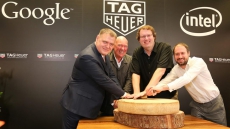A new robotic model developed by scientists, including an Indian-origin engineering student, can adjust its grip on objects.
For example, if a robotic gripper aims to pick up a pencil at its midpoint, but instead grabs hold of the eraser end, it could use the environment to adjust its grasp.
Instead of releasing the pencil and trying again, the new model enables a robot to loosen its grip slightly, and push the pencil against a nearby wall -- just enough to slide the robot's gripper closer to the pencil's midpoint.
The model developed by a team led by Alberto Rodriguez, an assistant professor of mechanical engineering at Massachusetts Institute of Technology (MIT), and graduate student Nikhil Chavan-Dafle, predicts the force with which a robotic gripper needs to push against various fixtures in the environment in order to adjust its grasp on an object.
Partnering robots with the environment to improve dexterity is an approach Rodriguez calls "extrinsic dexterity" -- as opposed to the intrinsic dexterity of, say, the human hand.
To adjust one's grip on a pencil in a similar fashion, a person, using one hand, could simply spider-crawl his fingers towards the centre of the pencil.
But programming such intrinsic dexterity in a robotic hand is extremely tricky, significantly raising a robot's cost.
With Rodriguez's new approach, existing robots in manufacturing, medicine, disaster response, and other gripper-based applications may interact with the environment, in a cost-effective manner, to perform more complex manoeuvres.
"Chasing the human hand is still a very valid direction in robotics. But if you cannot afford having a $100,000 hand that is very complex to use, this method brings some dexterity to very simple grippers," said Rodriguez.
The new approach will be detailed in September at the international conference on Intelligent Robotics and Systems.






